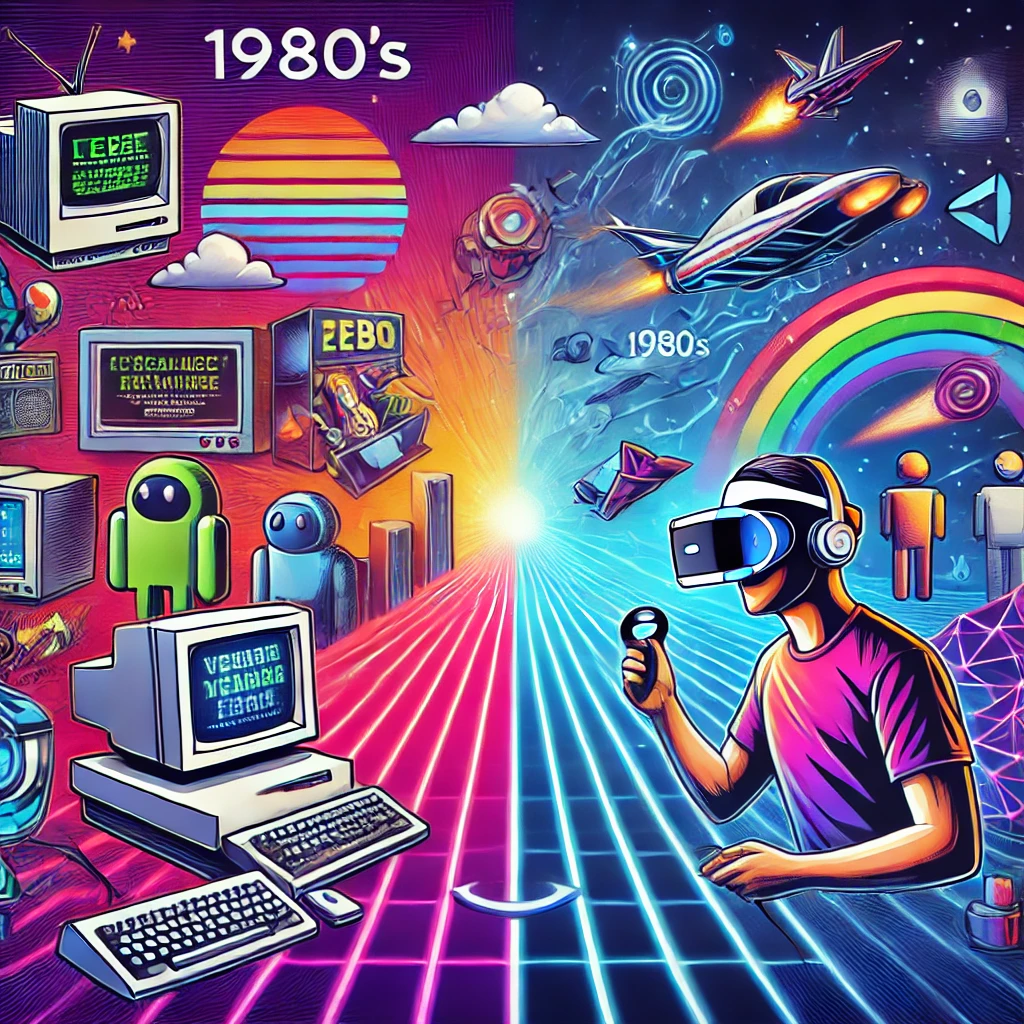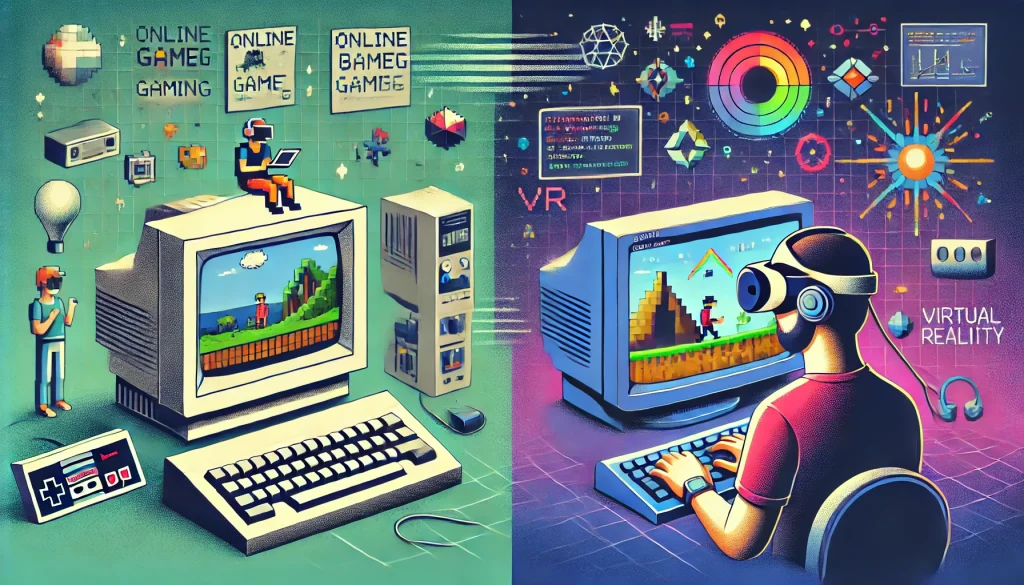
The Evolution of Online Gaming: From Text-Based Adventures to Virtual Reality
The online gaming industry has evolved dramatically, shaping the digital landscape as we know it. From the early days of simple text-based adventures to the immersive experiences provided by virtual reality today, online gaming has transformed to meet the demands of technology and users alike. This evolution has not only altered how games are developed but also changed how players interact, forming a community-driven culture around digital worlds that continue to grow. Today, we’ll explore this fascinating journey, from the humble beginnings of online gaming to the cutting-edge technology that defines it now.
Early Beginnings of Online Gaming
The roots of online gaming trace back to the 1980s, a time when home computing was still new, and games were mostly simplistic. In this era, games relied heavily on text, with players typing commands to interact with virtual worlds, solve puzzles, and make decisions. This genre, often embodied by Multi-User Dungeons (MUDs), gave players an early taste of collaboration and competition. MUDs were mostly text-based and designed for storytelling, requiring players to imagine the environments and actions described in the text, making for a highly engaging experience that fostered creativity and teamwork.
Text-Based Adventures and Their Legacy
Text-based adventures, such as the iconic “Zork,” captivated early gamers by offering rich narratives and challenging puzzles without graphical support. These games relied heavily on players’ imagination, drawing them into complex worlds through descriptive storytelling. “Zork” and similar games introduced elements still valued in gaming today, such as narrative depth, exploration, and player choice. The creativity and engagement encouraged by text adventures set the foundation for the importance of story in game design, a principle that remains central in the gaming industry, even as graphics have improved.
The Rise of Graphical Games and Multiplayer Networks
In the 1990s, advancements in computer graphics and processing power began to transform the gaming landscape. Games evolved from simple text-based interfaces to more visually engaging experiences, as titles like “Ultima Online” and “Diablo” introduced players to graphical environments. These games allowed players to see their characters and the world around them, increasing immersion and attracting a wider audience. The growth of broadband internet during this time also enabled faster connections, allowing more players to join multiplayer games and interact in real-time, which was a significant milestone in online gaming history.
The Impact of Graphical Evolution
The transition from text to graphical interfaces expanded the gaming community, making it accessible to those who preferred visual elements. This shift led to the birth of the MMORPG genre, with games like “EverQuest” and “World of Warcraft” achieving massive popularity. These games allowed players not only to experience richly detailed worlds but also to connect with thousands of others, forming lasting communities. By enabling real-time interactions in persistent virtual worlds, MMORPGs transformed online gaming into a social activity, where cooperation and competition fueled player engagement, setting a new standard for future games.

Modern Innovations: Virtual Reality and Beyond
Today, online gaming has entered an age of virtual reality (VR) and augmented reality (AR), creating immersive experiences that were once science fiction. VR headsets like the Oculus Rift and HTC Vive allow players to step inside the game, experiencing virtual worlds in 360-degree views. This technology has made games more interactive, with titles like “Beat Saber” and “VRChat” leading the way in this genre. Players can now interact with game elements in a physical way, heightening the sense of realism and presence, and further blurring the lines between reality and the digital world.
Future Potential of Virtual and Augmented Reality
As VR and AR technologies continue to develop, the potential for online gaming grows even further. Developers are exploring ways to make VR more affordable and accessible, while also pushing the limits of immersion. Future games might fully integrate VR and AR with artificial intelligence, creating dynamic worlds that respond to player actions in real time. In this future, online gaming could become a second reality for players, offering a limitless realm for exploration, social interaction, and even educational experiences. The next chapter in online gaming will likely see even deeper integration of physical and digital realities, where players not only play but live in these virtual worlds.
